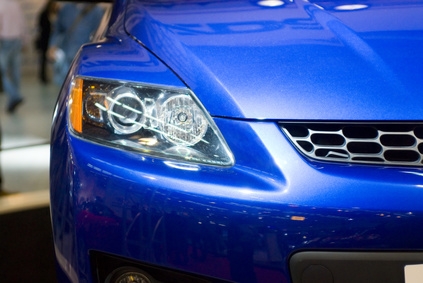
Whether you're filling in scratches or glossing over bare spots, your auto-touchup project presents a number of difficulties. It can be hard to get your brushed paint to have the same texture as the rest of the auto body, or to get it to be the same exact color. In other words, the real trick behind auto painting is getting the new paint to blend in with the old. Chances are that it won't look completely natural, but there are a few tricks of the trade that you can use to get around this situation.
Mask off an area around the scratch with masking tape. If you are trying to fix a number of scratches or a particularly big spot, you need to mask a much larger area off, maybe even a quarter of the car. Be sure to mask off mirrors and windows that might be in the way.
Choose a suitable brush. For small scratches you will need a fine brush with a thin tip that comes to a point. For a large spot or many tightly-clustered scratches you will need a wide brush.
Fill in any small, isolated scratches with several layers auto enamel. Add enough layers so that the new paint is actually raised above the old, forming a small bump.
Fill in large bare spots and tight clusters of scratches with a large brush. Do so in even strokes that are aligned in the same direction. The new paint will stand out against the old.
Proceed to 'feather' around the edges to make the new paint blend in with the old. Feathering is a process where a painter blurs the edges between two colors by adding a crisscross of strokes at the border, thereby creating a gradient of color. Your new coat should gradually fade into the old coat. Do this over a large area of your car.
File down the raised paint on the isolated scratches using 1200-grit sandpaper. Do this until the new paint is level with the old.
Let the paint dry for eight hours.